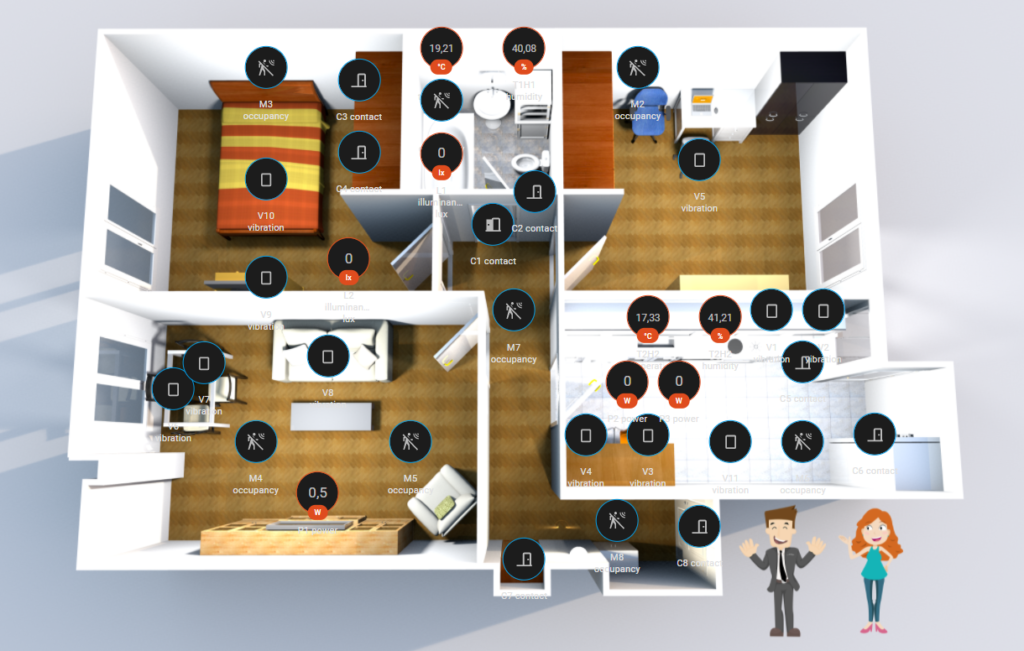Since the beginning of the times they exist few things that we know they are going to happen with totally security. The world is full of happenings and alleatory events very difficult to predict, even for our partner artificial intelligence, which often seems to be a kind of panacea that can solve everything.
However, it exists something that I guarantee you its going to happen, and in a certain way, it is happening at this moment. We are getting old. Inside our life cycle, time goes by as we live through experiences, complete milestones and achieve goals. This time, even if we don´ t want it, little by little leads to a decline in both physical and physcological abilities, to the extent that perfoming daily tasks within the household is a real challenge, and sometimes even dangerous. At this moment doubt arises, am I looking for someone to help me or am I looking for a residential centre to live in?
For much people, their house is their independence symbol. Their house is that place where they can impose their own rules and were they don´ t have to be accountable to anyone. According to a study realized in 2020, in Spain exists around 4,849,900 people living alone, and inside this data, more than 2 million have 65 years or more. This is the 43.6% of the total. However, the odd thing of this statistic isn´ t only the high number of elderly that lives alone, but that this percentage has increase in a 6.1% compared to previous year. Therefore, it´ s assume that the tendence of society is living alone once you reach 65 years.

However, as I started to explain at the beggining of this post, it arrives a moment in which remembering some easy tasks, as it can be taking medicines at the right hour, can be difficult or even frustrating, and failure to remember can lead to a dangerous situation. With all these, it would be interesting counting with a person or system that reminds us taking medicines at time if we haven´ t, or remind us that we have to eat if we have forgotten, but without “annoying” us during the rest of day. This could involve a topic that is very much in vogue nowadays, home automation.
We could say that we start talking about home automation in the 70s, with several building automation pilot tests, but it was not until the 80s when it started the development of a commercial level for its distribution in urban households. At present, without going too much into standards and technological aspects, the following breakdown can be made within such a large branch as home automation:
- Sensorization and data collection (If this occurs): It´ s about the first stage to have into account inside our home automation system. What we want to do is to collect data and events inside our household. We want to know if the street door has open for knowing if we have been robbed, our house temperature in case the heating needs to be turned on or presence in a certain room so that light is switched on automatically. All these can be reached thanks to technology, that monitorize the status of our household through a sensors network that measures physic parameters, as temperature, humidity or luminosity.
- Actuators and implementers of action (then do this): Once we know what has occured inside the house, would come into play the second stage, we indicate to a socket switching on an electrodomestic, for example, or to a little engine to open up a door or window.

With all these, it is understood that people carried out their daily tasks following more or less established patterns. For example, a person entering his bathroom, closes the door and thereafter humidity inside the room starts increasing over standard levels, it can be deduced that it is taking a shower. Another example could be that is lunchtime and the temperature in the area were glass ceramic hob is located starts to increase, at the same time as the fridge and the drawers containing the species are opened. It can then be deduced that the person is cooking. Therefore, it is possible to track the tasks performed by an elderly person living alone using a home automation network that collects the events occuring in the house and an artificial intelligence (such as a neural network) that processes this data. Once the data acquisition stage has been completed, it would be interesting to integrate this information with the different telecare systems in the region. In this way, depending on the daily activities that are detected (or, alternatively, undetected), the telecare system can provide suggestions to the person or, if a dangerous situation such as a fall is detected, intervene in person.
From the Health and Wellnes area of CARTIF we seek to offer solutions so that older people can live as fully independently as possible for as long as possible. For this reason, one of our research lines it is focused on the contain of this post so that older people could stay at their homes in a totally operative and safe way. The theme that has been treated about home automation will serve to provide support facing the decrease of both physical and sensorial abilities. However, we are also working on solutions to improve the autonomy in households facing the physical deterioration through the development of technological assistants for the use of toilet and intelligent walkers.
To sum up, I want to emphasise that is very important to take care of the wellnes of our elderly and provide solutions that allow them to be fully active and to enjoy a healthy mind. Wether we like it or not, time is passing for all of us.
- It´s my life and I want to keep deciding about it - 25 February 2022
